I'm working on a project where we currently use Cognito User pools for auth., but after some research we found that if we want more fine-grained access-control we should use an Identity pool instead.
The theory is simple : first we create an Identity Pool that uses the Cognito user pool as Auth provider. Then in API Gateway we set up our Lambda to use Authorizer: AWS_IAM. To access it, User now has to :
- Sign in to User pool, which gives user a JWT Token.
- Exchange that JWT Token with the Identity pool for temporary AWS Credentials.
- Use those new credentials to sign API request to the protected Lambda.
Steps 1 and 2 work fine, with a test user we manage to get the JWT Token and successfully exchange it for AWS credentials. They look like this (modified for security reasons):
awsAccessKey: ASIAZFDXSW29NWI3QZ01
awsSecretKey: B+DrYdPMFGbDd1VRLSPV387uHT715zs7IsvdNnDk
awsSessionToken: IQoJb3JpZ2luX2VjEA8aCWV1LXdlc3QtMyJHMEUCIQC4kHasZrfnaMezJkcPtDD8YizZlKESas/a5N9juG/wIQIgShWaOIgIc4X9Xrtlc+wiGuSC1AQNncwoac2vFkpJ3gkqxAQIWBAAGgw2NTI5NTE0MDE0MDIiDDuTZ1aGOpVffl3+XCqhBDmjCS3+1vSsMqV1GxZ96WMoIoEC1DMffPrBhc+NnBf94eMOI4g03M5gAm3uKAVCBkKO713TsQMaf4GOqqNemFC8LcJpKNrEQb+c+kJqqf7VWeWxveuGuPdHl1dmD2/lIc8giY0+q4Wgtbgs6i0/gR5HzdPfantrElu+cRNrn/wIq4Akf+aARUm14XsIgq7/1fT9aKSHpTgrnTLHeXLKOyf/lZ947XdH71IHDZXBUdwdPikJP/Rikwill6RRTVw7kGNOoacagCmmK7CD6uh9h0OnoW3Qw5df+zX5Z8U7U55AyQfEyzeB7bW3KH65yJn6sopegxIIFfcG2CLIvtb5cZYImAz/4BdnppYpsrEgLPUTvRAXn6KUa5sXgc5Vd7tJeRo5qpYckrR2qfbebsU+0361BCYK2HxGJqsUyt1GVsEoAosxofpn/61mYJXqfeR0ifCAgL7OMOquvlaUVXhHmnhWnUSIOUQ+XtRc+DxUDjwn5RPD7QTwLHIat7d4BI4gZJPAcMT9gZrBVO/iN88lk5R0M5LBzFwd5jiUW46H/G755I4e5ZHaT1I37TY3tbcObIFGVVNz5iHDpK/NePTJevKTshe8cYxXczOQgos4J/RsNpqouO9qRgT9JDyXjU3Etyxqm9RzbLYgV3fl5WwZl5ofVmrBsy3adq+088qEz5b9cogPgDggA/nQaPv7nAZHT8u0ct/hw230pmXUDGCutjOML2G6ZYGOoUCy+BitAN0SZOYWlbZlYomIGKMNQuXjV4z+S9CEW8VunqW4Rgl7rTba6xbI0DdX9upYEczeln6pTl+2UPEDYf6usayFfMsGDvJXesqC5EOtWco1Z8tem/wDQIH7ZbioQHZ7UJDd5ntUAruFveY7sXmKsQbtah/RB5W5HLYy19hCmyGpYMnVXxR0FcNGImsweNcprtw9MmQqy2SUK9V6Rwn1yIE6svfAT3NVyzp9ILbP/qSQLGHNhm4CNd8+EJZZa9rcmCbQiQ+iBJ8FW+AmRSCC4LiB1dhuH1KsFo88DyNhYdVf3py8XV4CDR7l+UyuZMrIQsERwx9JzwVBjfv9COT948mvyGTY
The issue is the signing. Our Lambda is behind a CloudFront proxy + API Gateway. Requests to e.g john.dev.project.io are forwarded to the 'real' API origin at api.dev.project.io.
Using Postman and setting AWS Signature, the request doesn't work and gives following error :
The request signature we calculated does not match the signature you provided. Check your AWS Secret Access Key and signing method. Consult the service documentation for details.\n\nThe Canonical String for this request should have been\n'................................................................................................................................................................................................................................................................'\n\nThe String-to-Sign should have been\n'............................................................................'\n
We found however, that by overriding the Host header to the real origin of the API, request now works fine :
So it seems that since the custom URL we use and the original API URL are different, signatures don't match. The problem is that by default browsers don't allow you to override Host header for security reasons, so our front-end signed requests always fail.
Maybe the proxy is also modifying other headers before forwarding to origin, which would also invalidate the signature from my understanding...
Any help appreciated in solving this issue!


